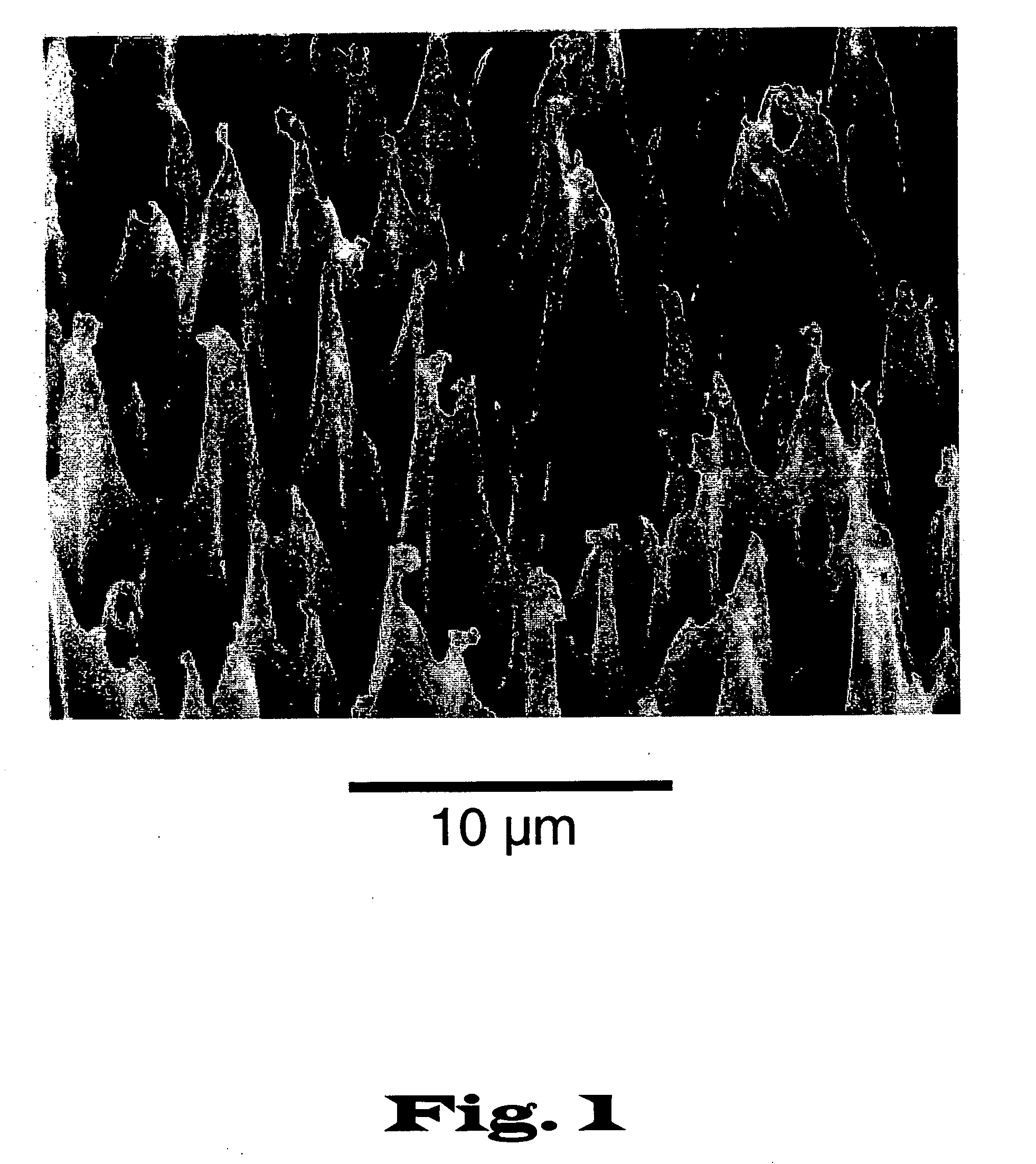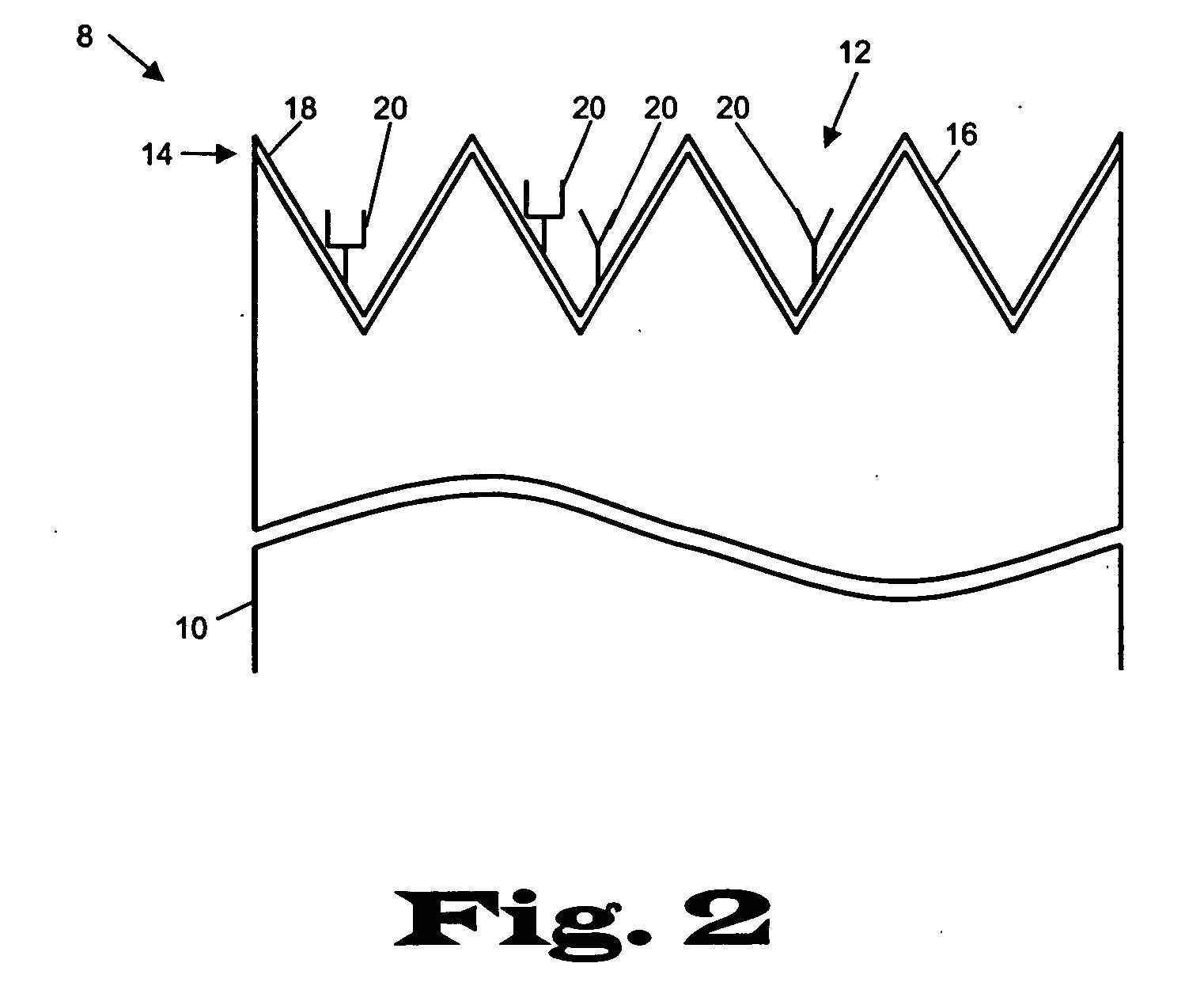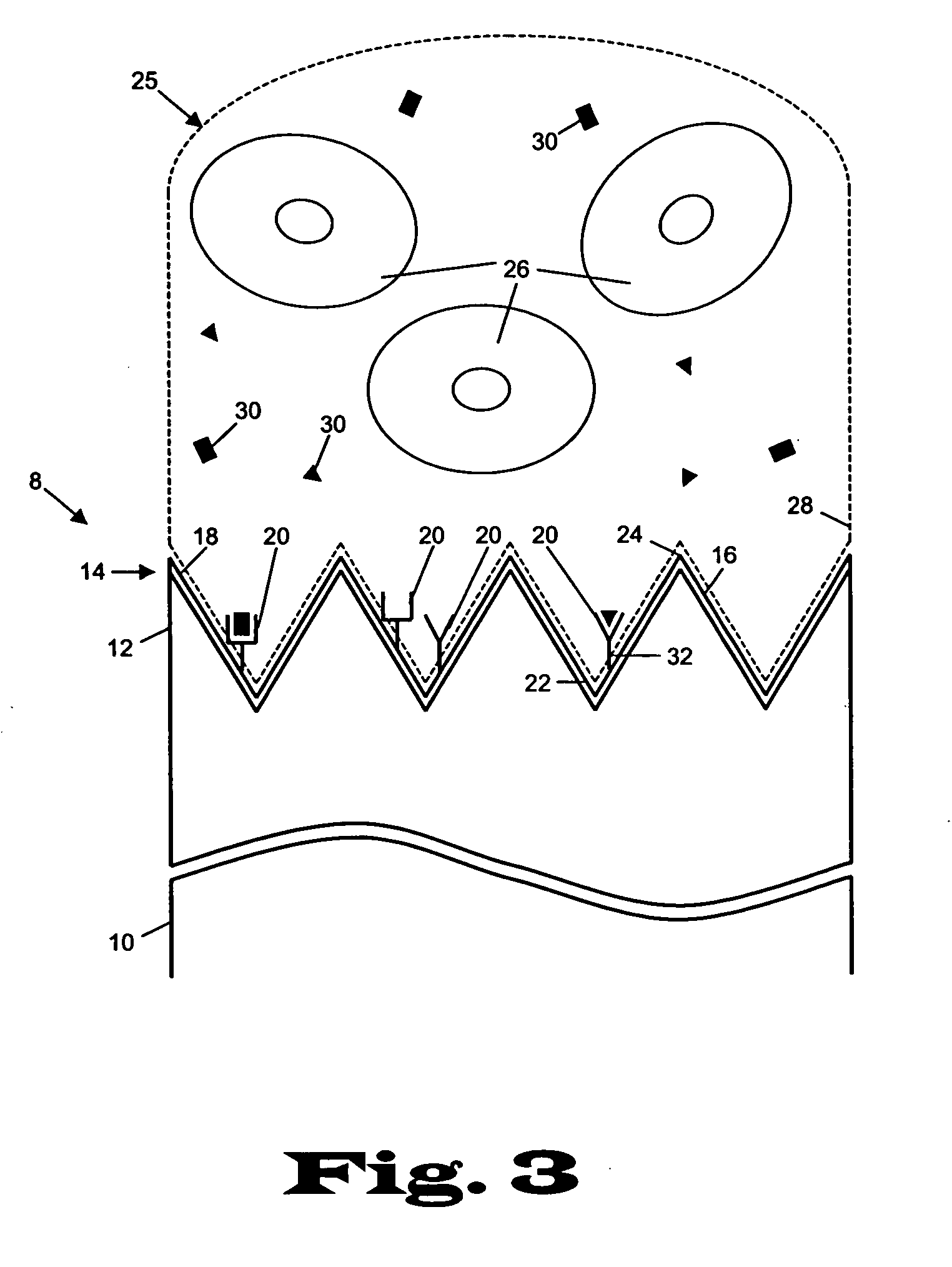Detection of acute myocardial infarction biomarkers
a biomarker and myocardial infarction technology, applied in the field of early detection of acute myocardial infarction, can solve the problems of permanent heart muscle damage, unnecessarily admitting 2.5 million patients with low-risk chest pain to the hospital as a precaution, and spending 5 billion or more of unnecessary medical costs
- Summary
- Abstract
- Description
- Claims
- Application Information
AI Technical Summary
Benefits of technology
Problems solved by technology
Method used
Image
Examples
Embodiment Construction
[0023] The present invention relates to devices and methods for the analysis of biological fluid samples, such as blood, for acute myocardial infarction (AMI) precursors or biomarkers, using a biosensor technology. While reference will be made to blood throughout, the fluid sample can include other biological samples, such as urine or saliva. The sensor provides for the spatial separation of the cellular elements of the blood, and provides a rapid analysis of the separated blood plasma component using reagents attached to the sensor, which are specific to the biomarker being measured. Therapeutic cardiovascular drug monitoring can also be performed with the assays. These assays can measure specific platelet and coagulation proteins that participate early in the evolution of a thrombus (blood clot) and later in a potential acute myocardial infarction (AMI). By assaying a blood sample for these AMI precursors / biomarkers, a determination can be made much earlier whether the presenting ...
PUM
| Property | Measurement | Unit |
|---|---|---|
| diameter | aaaaa | aaaaa |
| diameter | aaaaa | aaaaa |
| diameter | aaaaa | aaaaa |
Abstract
Description
Claims
Application Information
 Login to View More
Login to View More - R&D
- Intellectual Property
- Life Sciences
- Materials
- Tech Scout
- Unparalleled Data Quality
- Higher Quality Content
- 60% Fewer Hallucinations
Browse by: Latest US Patents, China's latest patents, Technical Efficacy Thesaurus, Application Domain, Technology Topic, Popular Technical Reports.
© 2025 PatSnap. All rights reserved.Legal|Privacy policy|Modern Slavery Act Transparency Statement|Sitemap|About US| Contact US: help@patsnap.com



